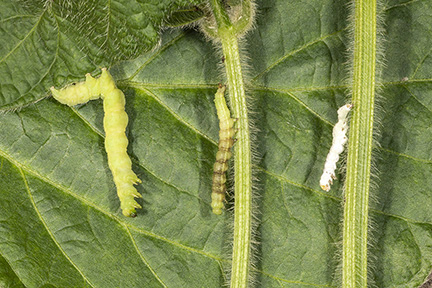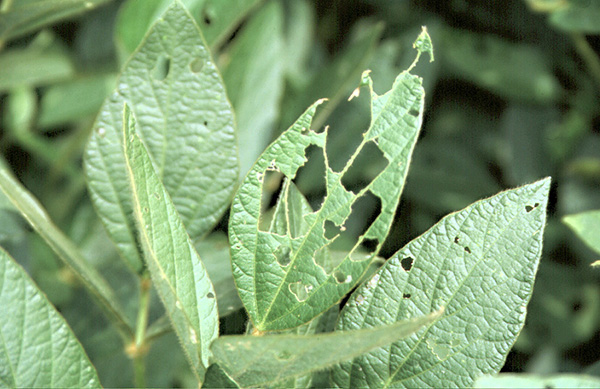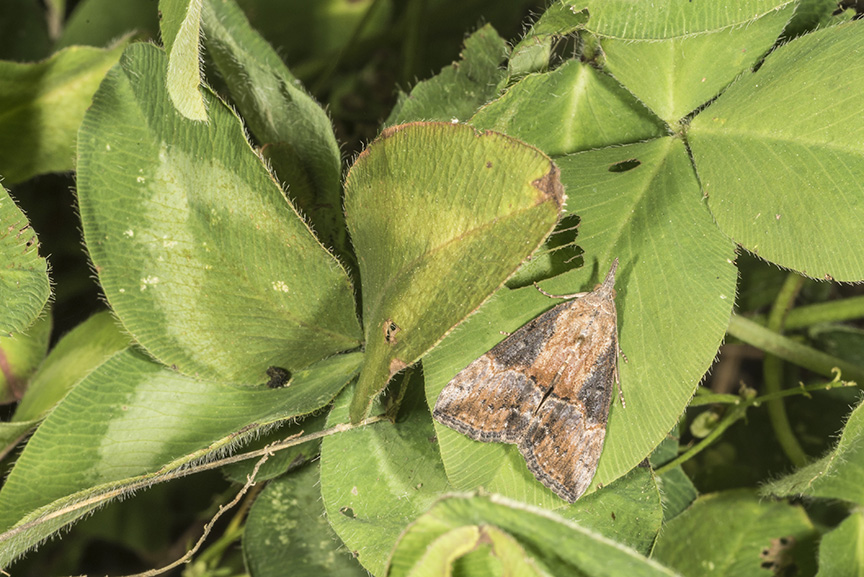Green cloverworm is considered an occasional defoliating pest of soybean, typically later in the growing season. In the last couple of weeks, the Diagnostic Training Center’s soybean plots seemed to getting more green cloverworm damage than normal. In talking with some pest managers in other areas of the state, they have noted the same thing. Still, it is important to keep in mind, it takes over 15% defoliation to justify treating soybean in the pod filling stages. But wait…there’s more.
Interestingly, about a week after noticing the increase in larval damage, caterpillars were beginning to show signs of becoming diseased, white and chalky. Insect fungal diseases are generally favored by warm, moist (i.e., rain, dew, high humidity) conditions. Within a few days, it was becoming very difficult for me to find a healthy caterpillar, this is known as an epizootic. I am certain this is happening/already happened in other areas of the state as well. Though, I have many times “preached” the attributes of “good guys” that work behind the scenes, it is still impressive to experience it, especially so quickly as in this case.
In the end, scouting the field, getting the pest correctly identified, understand/implementing economic thresholds AND considering beneficial organisms is not only Integrated Pest Management, but smart farming. Happy Scouting!

Green cloverworm larvae showing different stages of a fungal pathogen.

Typical green cloverworm leaf feeding.

Green cloverworm moths have been a common sight around farmsteads lately.


